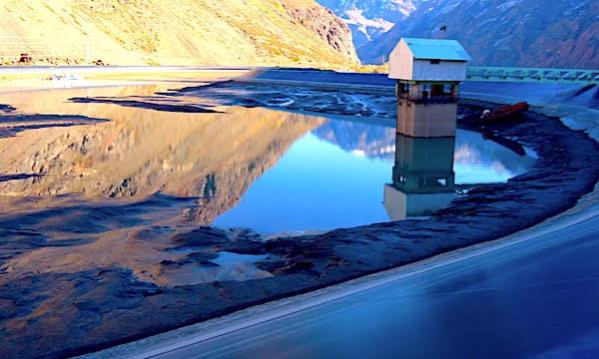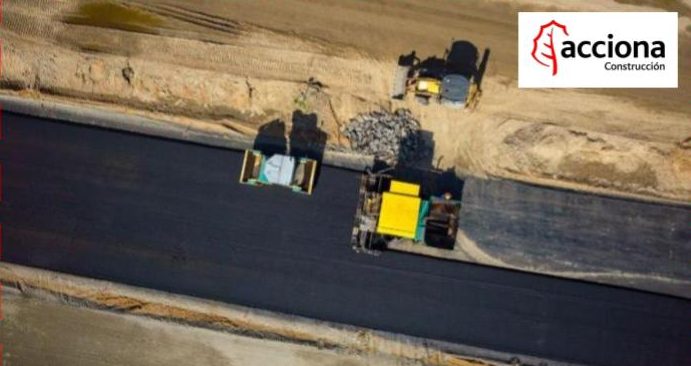SHARE
4 New Techniques in Civil Engineering
In this post, you can find 4 new techniques in Civil Engineering that are improving the construction process significantly.If you are interested in civil engineering challenges, learn more about them in our recent challenges section. Minimizing the accumulation of sediments in a hydropower plant
Minimizing the accumulation of sediments in a hydropower plant  Asphalting under the rain
Asphalting under the rain  Drying wet soil in road construction projects
Drying wet soil in road construction projects
1. SELF-HEALING CONCRETE
Bond is a standout amongst the most generally utilized materials in development, additionally one of the biggest givers to unsafe carbon emanations said to be in charge of around 7 for every penny of yearly worldwide discharges. Splitting is a noteworthy issue in development, as a rule brought about by the introduction of water and chemicals. Analysts at Bath University are hoping to build up a self-mending solid, utilizing a blend containing microorganisms inside microcapsules, which will develop when water enters a split in the solid to deliver limestone, stopping the break before water and oxygen has an opportunity to erode the steel support.2. Warm BRIDGING
Effective protection material is turning out to be progressively vital all through the development business. Warm transmission through dividers has a tendency to be gone specifically through the building envelope, be it stonework, square or stud edge, to the inside sash, for example, drywall. This procedure is known as "warm crossing over". Aerogel, an innovation created by Nasa for cryogenic protection, is viewed as a standout amongst the best warm protection materials and the US turn off Thermablok has adjusted it utilizing an exclusive aerogel in a fiberglass network. This can be utilized to protect studs, which can apparently build general divider R-esteem (an industry measure of warm resistance) by more than 40 for every penny.Check out the ennomotive blog for more posts about civil engineering innovations, don’t miss out!3. PHOTOVOLTAIC GLAZING
Building incorporated photovoltaic (BIPV) coating can help structures produce their own particular power, by transforming the entire building envelope into a sun-powered board. Organizations, for example, Polysolar give straightforward photovoltaic glass as a basic building material, shaping windows, façades, and rooftops. Polysolar's innovation is effective at creating vitality even on north-bound, vertical dividers and its elite at raised temperatures imply it can be twofold coated or specifically protected. In addition, saving money on vitality charges and procuring encourage in levy incomes, its cost is just negligible over customary glass, since development and structure costs remain, while cladding and shading framework expenses are supplanted.Next gen transparent photovoltaic glass being generated by Polysolar looking forward to all windows generating electricity #cunningplan
— Polysolar (@PolysolarPV) February 21, 2012
4. Active FOOTFALL
Active vitality is another innovation a work in progress. Pavegen gives an innovation that empowers deck to saddle the vitality of strides. It can be utilized inside or outside in high activity regions and produces power from walker footfall utilizing an electromagnetic acceptance process and flywheel vitality stockpiling. The innovation is most appropriate to transport center points where an extensive stream of individuals will ignore it. The biggest sending the organization has done is in a football contribute to Rio de Janeiro to help control the floodlights around the pitch. At present, it has a transitory establishment outside London's Canary Wharf station driving road lights.Hungry for more Civil Engineering Challenges? The ennomotive community of engineers has already solved the following:Meet #ShellSpringboard alumni @Pavegen, who launched the 1st player-powered football pitch: https://t.co/0iiJc4OTnd pic.twitter.com/gQje2QrDIM
— Shell Society (@Shell_society) October 3, 2016
 Minimizing the accumulation of sediments in a hydropower plant
Minimizing the accumulation of sediments in a hydropower plant  Asphalting under the rain
Asphalting under the rain  Drying wet soil in road construction projects
Drying wet soil in road construction projects Read more about these projects and participate in future ennomotive engineering challenges.
